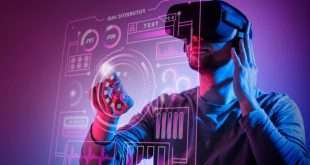The digital landscape is ever-evolving, and businesses are constantly seeking innovative ways to understand their customers better. One such avenue that holds great promise is the integration of Virtual Reality (VR) and Augmented Reality (AR) technologies into user behavior tracking. Traditional methods of gathering user data on websites can be limited in scope and fail to provide the deep insights needed to optimize user experiences. In this blog, we will explore how VR and AR can unlock a wealth of valuable data, empowering businesses to comprehend user behavior on websites like never before.
Understanding User Behavior Data
User behavior data is the collection of interactions, preferences, and actions exhibited by visitors on a website. It includes various metrics, such as click-through rates, time spent on pages, navigation patterns, and conversion rates. By analyzing this data, businesses gain valuable insights into what engages users and what can be improved to enhance their experiences. However, traditional methods like heatmaps and analytics tools only offer a partial view of user behavior.
Limitations of Traditional User Behavior Tracking
While traditional tracking tools provide valuable data, they are often limited by the two-dimensional nature of the web interface. They lack the ability to capture the full context of user interactions and emotions. Additionally, the data obtained might not accurately represent real-world scenarios. This limitation can result in businesses making decisions based on incomplete information, potentially missing out on valuable opportunities to optimize their websites.
Immersive Insights through Virtual Reality (VR)
Integrating VR technology into user behavior tracking opens up exciting possibilities. VR creates immersive, lifelike environments that mimic real-world interactions. By observing users’ actions within these environments, businesses can gain unprecedented insights into how users engage with their websites. For instance, VR can be used to study how users interact with e-commerce platforms, simulating the experience of browsing products in a physical store.
Advantages of Augmented Reality (AR) in Tracking
AR superimposes digital elements onto the physical world, seamlessly blending virtual and real-world experiences. This technology can enhance user behavior tracking by providing real-time data overlaying users’ physical interactions with products or services. For instance, AR can help understand how users interact with virtual furniture placed in their real living spaces before making a purchase decision.
Overcoming Ethical Concerns
As with any data collection method, privacy and ethical concerns arise. VR and AR tracking should be carried out with users’ informed consent, ensuring their data is used responsibly and securely. By being transparent about data usage, businesses can build trust with their users and foster long-term relationships.
Implementing VR and AR Tracking
To harness the full potential of VR and AR for user behavior tracking, businesses need to invest in the right hardware and software solutions. Collaborating with VR/AR experts and data analysts is essential to develop custom tracking systems tailored to their specific requirements.
Analyzing and Interpreting VR/AR Data
With the wealth of data obtained through VR and AR tracking, it becomes crucial to have a robust analysis and interpretation process in place. Businesses must identify key performance indicators (KPIs) and develop data visualization techniques to extract meaningful insights from the collected data.
Improving User Experience through Insights
The ultimate goal of user behavior tracking is to enhance user experiences. VR and AR integration provide deep insights that can help businesses identify pain points and opportunities for improvement. By understanding how users interact with interfaces, businesses can optimize their websites to cater to user preferences and drive conversions.
Enhancing Personalization and Targeting
Personalization is a key element in creating memorable user experiences. VR and AR data can offer a comprehensive view of individual user preferences, allowing businesses to tailor content and offers to each user’s unique needs. This targeted approach can significantly boost user engagement and satisfaction.
The Future of User Behavior Tracking
As technology continues to advance, the potential for user behavior tracking through VR and AR is boundless. With the advent of 5G networks and more accessible VR/AR devices, these technologies will become more prevalent in everyday life. This widespread adoption will provide even more comprehensive data, allowing businesses to better understand their customers and stay ahead of the competition.
Final Words
The integration of VR and AR into user behavior tracking represents a transformative shift in the way businesses understand their customers. By immersing users in lifelike environments and overlaying digital elements onto the real world, VR and AR offer deep insights into user interactions and emotions. As businesses adopt these technologies responsibly and ethically, they can revolutionize user experiences and drive success in the digital realm.
Commonly Asked Questions
1. How can VR and AR benefit user behavior tracking?
VR and AR create immersive environments and overlay digital elements onto the real world, allowing businesses to observe user interactions in unprecedented detail. This provides deep insights into user behavior, preferences, and emotions, enabling businesses to optimize their websites for better user experiences.
2. What are the ethical considerations of VR and AR tracking?
Ethical considerations include obtaining user consent for data collection, ensuring data security, and being transparent about data usage. Businesses must prioritize user privacy and build trust by handling data responsibly.
3. How can businesses implement VR and AR tracking effectively?
To implement VR and AR tracking, businesses need to invest in the right hardware and software solutions. Collaborating with VR/AR experts and data analysts is essential to develop custom tracking systems tailored to their specific requirements.
4. What are the advantages of AR in user behavior tracking?
AR superimposes digital elements onto the physical world, providing real-time data on user interactions with products or services. This helps businesses understand how users engage with their offerings in real-world scenarios, aiding decision-making processes.
5. How can VR and AR data improve personalization and targeting?
VR and AR data offer a comprehensive view of individual user preferences, enabling businesses to tailor content and offers to each user’s unique needs. This personalized approach enhances user engagement and satisfaction, leading to increased conversions.
 webfily
webfily


